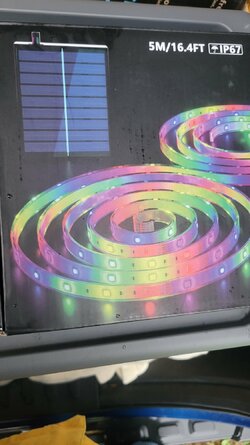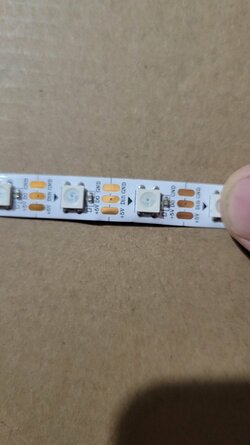

I'm looking to get some advice or help in wiring. I bought the solar led lights pictured above. Stripped the silicone tube off because I'm going to be putting it into a silicone diffuser. I wanted to higher LED density but I was hoping to use the controller that is built into the backside of the solar panel. The output is 24 volt. I picked up WS2812B and Ws 2813 lights with a higher LED density pictured below. 2812B has three pins the 2813 has four. If the previous draw was 24 volts the 5 volt draw on the higher density lines shouldn't be a problem.? On the original LED line there is no ground. Only power r, b, g. Four pins. On the new ones there's power some sort of data line and the ground line. Without buying a dedicated solar panel, controller, battery, How can I hook up the original LED line to the new LEDs?
My soldering skills are rudimentary but sufficient, assembly skill good, Electrical knowledge poor. I might be misunderstanding but I thought that as long as the draw is less than the voltage output it would work.
